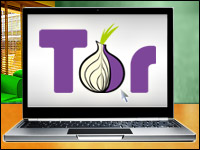
That there are many compelling reasons to switch to Linux is no longer a matter of much debate.
Excellent security and low — or nonexistent — costs, to name just two, have already persuaded countless organizations and individuals around the globe to eschew the world of end-user license agreements (EULAs) and opt for the freedom and openness of Linux instead.
It’s difficult to count just how many desktop users Linux can claim so far — most, after all, don’t go through the traditional purchase process that would ease tracking. However, some estimates place its market share as high as 10 percent.
Indeed, Microsoft’s own Steve Ballmer apparently considers Linux a bigger threat than Apple — surely a testament, at least in part, to its growing acceptance.
‘The Nicest Feature’
Yet switching to Linux isn’t quite as straightforward as buying a Mac or a Windows PC, because Linux isn’t just one thing. It exists in many forms — called “distributions,” or “distros” — and newcomers must choose the one they’d like to use.
Ubuntu, Fedora, Debian, openSUSE, Mandriva, Mint, Slackware and more are available for the taking, offering users an array of possibilities.
Though it may seem overwhelming at first, that very choice is one of Linux’s greatest strengths, Mike McGrath, Fedora infrastructure lead with Red Hat, told LinuxInsider.
“Really, the nicest feature of Linux desktops in general is there’s so much to choose from,” McGrath said.
Online Advice
Where should a newcomer begin?
Several online resources, not surprisingly, can offer some guidance. A Web site from advocacy group GNU/Linux Matters, for instance, provides an introduction to Linux and recommends several Linux distributions in particular.
DistroWatch, meanwhile, offers not only news and updates about the various Linux options, but also a guide to what it considers the top 10 distributions out there.
Similarly, LinuxQuestions offers a detailed discussion along with comparisons, self-tests and advice.
Then there are the blogs and forums, where endless conversations have focused on the topic.
One post from a few years back on The Linux Newbie, for example, generated myriad comments and suggestions on the topic on Digg and on Linux Today as well.
‘What Are You Looking to Get?’
Of course, 10 different sources will inevitably offer 10 different recommendations if the question isn’t honed to the particular user’s personal requirements.
“When new users are looking to choose a Linux desktop, it’s important for them to be clear about what they want from it,” McGrath asserted.
Similarly, “What are you looking to get out of Linux?” is the first question William von Hagen, author of Linux and open source books such as The Ubuntu Bible and The Definitive Guide to GCC advises newcomers to ponder.
Something That ‘Just Works’?
Most people’s answers will fall into one of the following categories, von Hagen told LinuxInsider:
- “nerdy nuts and bolts learning experience with operating systems, compilers, the X Window system, etc.;
- something that ‘just works’ for desktop or development purposes;
- something focused on a specific area of computing software, like scientific software, audio/video support or education;
- something that works on a specific type of system, such as a laptop with limited resources, a netbook, or a spare old desktop PC; [or]
- experience with a Linux distribution that could make me more attractive to a potential employer.”
For those with computer science savvy, “Gentoo provides the best learning experience around,” von Hagen said. “However, if you’re still in the learning phase and don’t deal well with delays or frustration, Slackware is a great distro that requires some knowledge and is hands-on enough to help you get more.”
‘The Next Big Thing’
Those focused on a specific area of computing, meanwhile, should “look at one of the Ubuntu derivatives that focuses on what you’re interested in, like UbuntuScience, MythBuntu, MediBuntu, Mint, EduBuntu and so on,” he suggested.
As resume fodder, “CentOS is attractive as a Red Hat clone,” von Hagen asserted. “Many companies use Suse, and thus OpenSuse can be attractive.
“Ubuntu is still attempting commercial penetration,” he added, “but it’s quite attractive, in general, as the distro that’s likely to continue to be the next big thing.”
Ubuntu and Fedora
It seems safe to say, however, that the majority of newcomers to Linux will appreciate something that “just works” — at least in the beginning. Most fingers seem to point to Ubuntu and Fedora as fitting that bill.
“I’d personally vote for Ubuntu or Fedora, in that order,” von Hagen said. “The Ubuntu package management tools are great, the distro is updated regularly, and they have a huge community of helpful people online, zillions of users, etc.”
Those behind Fedora “would say the same thing about Fedora,” of course, but “I don’t like their package management tools, and I also don’t like the feeling of being a research chimp for Red Hat,” he added.
‘Start with a Live CD’
“While it’s true that there are dozens of active distros out there, most of them are put together for very specialized purposes,” Michael Stutz, author of The Linux Cookbook, told LinuxInsider. “For most general installations, you’re best to stick with one of the major distros, and the advice I have is to try a few, if you can, and see which one you like best.
“If I were a new Linux user attempting a first Linux install, I might try Ubuntu just to see what it’s like,” Stutz said.
“I’d start with a Live CD of Ubuntu or Fedora,” said Eric Foster-Johnson, author and co-author of more than 20 books, including Beginning Shell Scripting and the Red Hat RPM Guide.
‘Easy to Learn’
The default GNOME desktops on Ubuntu and Fedora are “relatively easy to learn for Windows users,” Foster-Johnson told LinuxInsider. “If a Windows user can handle the change from XP to Vista, that person can handle GNOME.”
Ubuntu and Fedora are also among the largest Linux distributions in terms of user base, he added, which means any problems a newcomer might face “are likely to have been faced — and hopefully solved — by someone else.”
In addition, Ubuntu and Fedora have “focused a lot” on making the end-user experience better, Foster-Johnson added.
Of course, hardware, installation and support are other considerations that can sway the choice of a Linux distribution.
Choosing a Desktop Linux Distro, Part 2: Installation and Support





















































I remember when I chose my distro, and chose again and again… Things were simpler in those days, there were many fewer distros. To get a flavour of distros, check out http://distrowatch.com .
Besides the Live CD, which is an excellent way to try out distros, one should also look at virtual machines for testing distros side by side. One can install VirtualBox from SUN Micro at no cost and try out the user interface of different distros instantly, switching from one to another. This tool allows one to run a favourite application on the old OS while exploring the new. This approach does require modern hardware and some techie smarts but it is superior to dual-booting for some purposes. It is great for practising the art of installing a distro without messing with the underlying OS.
There are several layers of satisfaction a user may explore to decide on a distro. Visual appeal is configurable. Most distros can be given the look and feel of each other, so I would not be too concerned with that. Responsiveness may vary widely depending on the power of the CPU and the speed of hard drives. Ability to drive particular devices may vary for the latest devices. Ability to change window managers and themes may vary. It takes time to choose a distro. Fortunately it can be a very enjoyable sport, akin to dating.
Newbies are often encouraged by advice about the ease of use of a distro. I was. Eventually, however, the user of GNU/Linux will realize that long-term relationships matter and fall in love with one distro. For me, it was Debian, because it made me a master of my PC capable of doing anything I wanted. The large repository of software and the package management system and the social contract won my heart.
Good article. I hope to point a bunch of people to this. Having attempted to administer a small network of Windows machines, I quickly learned that pleasing people meant reinstalling Windows every 4 to 6 weeks on one machine or another. Since I moved the family to Linux, I’ve only had to reinstall that one machine that I use for experimentation. Life with Linux is good!